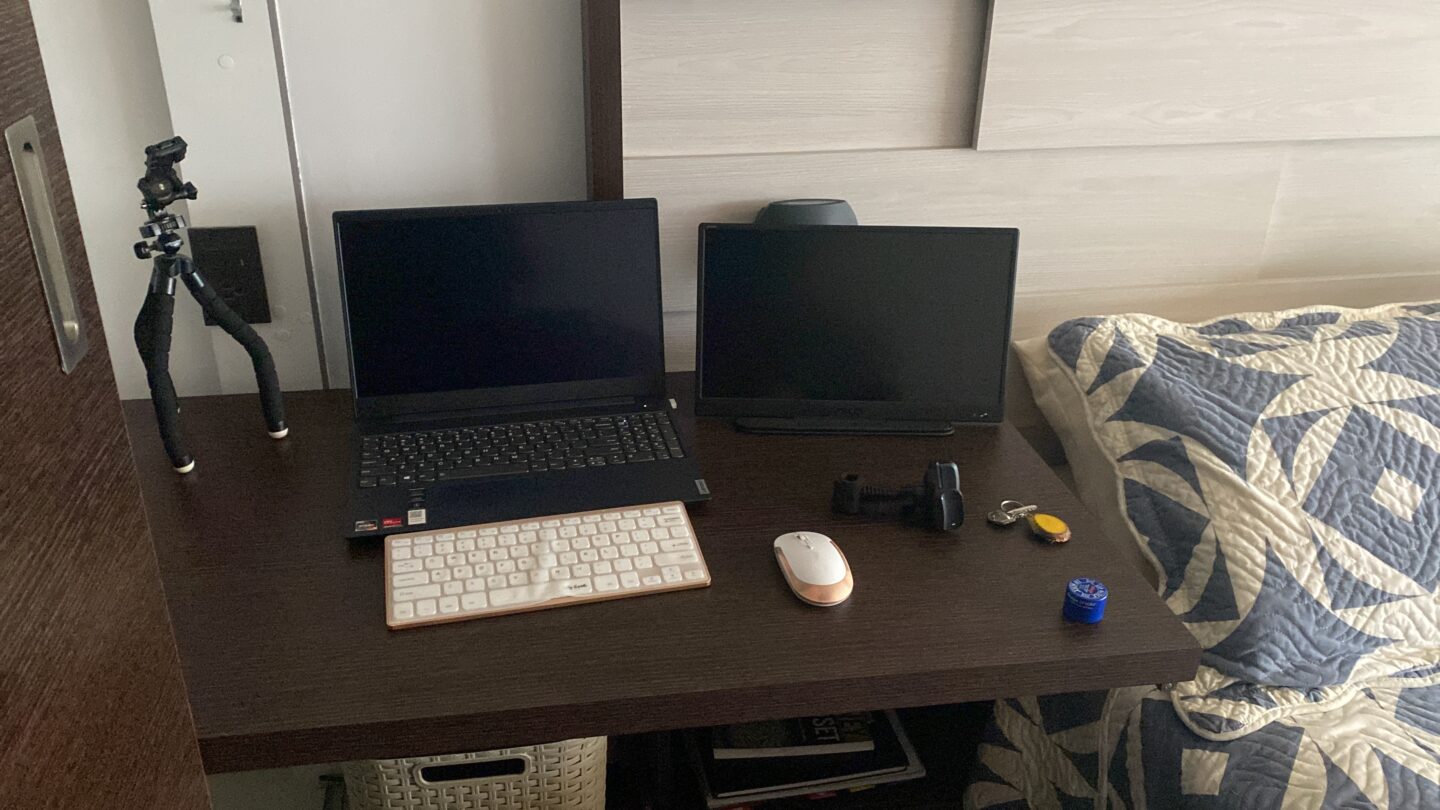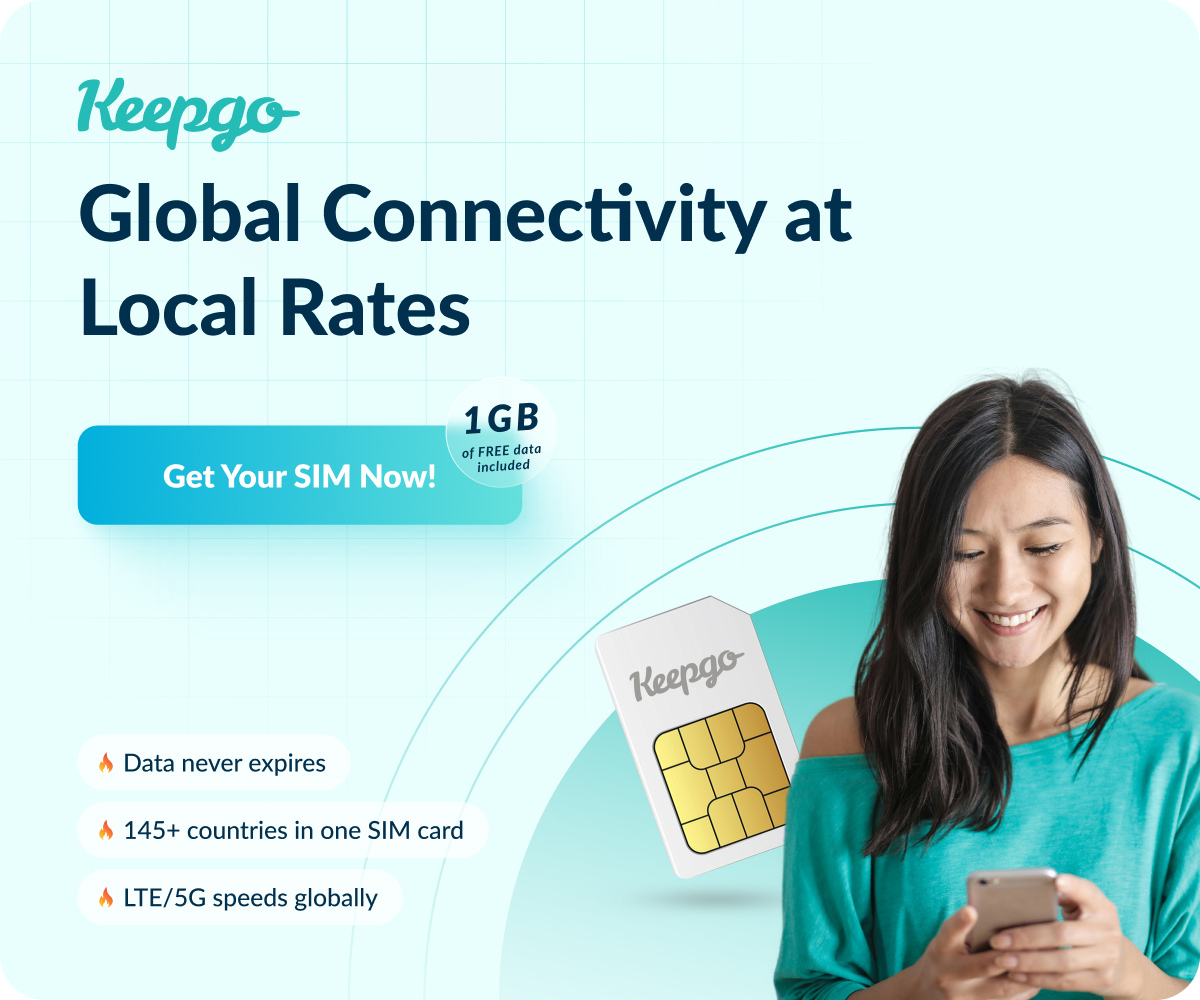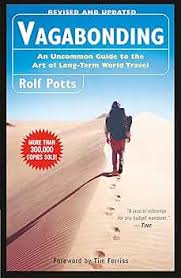Contents
- 1 The Allure of the Digital Nomad Lifestyle
- 2 What Is the Digital Nomad Lifestyle?
- 3 Why People Choose the Digital Nomad Lifestyle
- 4 The Hard Truths: Challenges You Need to Know
- 5 Can You Become a Digital Nomad With a 9–5 Job?
- 6 Money Matters: How Do Digital Nomads Earn Income?
- 7 Cost of Living & Budgeting
- 8 Visas, Legalities & Insurance
- 9 Tools & Essentials for Nomad Life
- 10 Where Do Digital Nomads Live?
- 11 Building Community: How Not to Feel Alone
- 12 Health, Wellness & Self-Care as a Nomad
- 13 Slow Travel vs Fast Travel: Which Works for Nomads?
- 14 The Digital Nomad Lifestyle Isn’t For Everyone
- 15 FAQ: Digital Nomad Lifestyle
- 16 Final Reflections: Is the Digital Nomad Lifestyle for You?
- 17 CTA / Next Steps
- 18 Are You Planning Your Next Trip? Here’s What I Use
The Allure of the Digital Nomad Lifestyle
The dream usually starts with a picture. Maybe it’s one you saw on Instagram: a laptop open on a rustic wooden table, a perfectly foamed cappuccino sweating beside it, and just beyond, a turquoise sea lapping at a white sand beach. Or perhaps the dream is a feeling—the quiet hum of a European café on a Tuesday morning, the freedom of knowing that your “office” is wherever you and your backpack happen to be. It’s the allure of a life untethered, a life without office politics, fluorescent lighting, or a two-hour commute. A life where you call the shots.
I know that dream intimately because it has been my reality, but my journey here wasn’t a straight line. It began not as a nomad, but as an expat. I moved to Ecuador to teach ESL, drawn by the promise of a lower cost of living and a deep desire for something more. Those years living in South America were my training ground; I learned Spanish, navigated new cultures, and got my first taste of life outside the conventional script. By 2017, my online business had grown enough to support me full-time, and a new dream began to take shape—one of slow travel and the true freedom of a “work from anywhere” life. That was the moment I transitioned from an expat, rooted in one place, to a nomad, embracing the world as my home.
I’m writing this guide because that dream, the Digital Nomad Lifestyle, is more accessible than ever, but the filtered photos don’t tell the whole story. They don’t show you the frantic search for a stable internet connection before a client call, the pang of loneliness on a holiday, or the bureaucratic nightmare of a visa application. This guide is the conversation I wish I’d had before I packed my bags for the first time. It’s not all glamorous, but for the right person, it is the most profoundly rewarding way to live.
What Is the Digital Nomad Lifestyle?
At its core, the definition is simple: a digital nomad is someone who leverages technology to work remotely while travelling, rather than being based in a single location. They are location-independent professionals who use laptops, phones, and the internet to perform their jobs from coffee shops, co-working spaces, or Airbnbs across the globe.
A digital nomad is someone who leverages technology to work remotely while travelling, rather than being based in a single location. They are location-independent professionals who use laptops, phones, and the internet to perform their jobs from coffee shops, co-working spaces, or Airbnbs across the globe.
But this simple definition belies a massive shift in our understanding of work. While the concept has been around for decades, its rise is a story of modern history. The 2008 financial crisis pushed many millennials into freelancing and alternative career paths, planting the seeds of a location-independent workforce.
Then, the COVID-19 pandemic acted as a global catalyst, forcing companies to embrace remote work on an unprecedented scale. Suddenly, millions of people realised that if their job could be done from their living room, it could just as easily be done from Lisbon, Bali, or Mexico City.
It’s important to clarify what a digital nomad is not.
- An Expat vs. a Nomad: An expat moves to another country with the intention of settling there for an extended period, often for a traditional job. They put down roots. This was me in Ecuador. A nomad is defined by movement; their home is where their laptop is, and that location is intentionally fluid.
- A Traveller (or Backpacker) vs. a Nomad: A traveller is on vacation. Their primary purpose is leisure and exploration. A nomad’s primary purpose is work, with travel being the backdrop. This doesn’t mean a rigid 9-to-5 schedule. In fact, one of the greatest advantages is designing a schedule that fits your life. For example, as a freelancer, I structure my week for maximum productivity and exploration. I dedicate Monday through Thursday mornings to deep work. This frees up my evenings to explore neighbourhood restaurants and my long weekends—Friday through Sunday—for excursions, day trips, and truly immersing myself in my new environment.
Within the nomad community, you’ll find a few distinct archetypes:
- Freelancers: The original nomads. Writers, designers, developers, consultants, and marketers who trade their skills for income on a project or gig basis, giving them an incredible amount of flexibility.
- Entrepreneurs: The builders. They run e-commerce stores, SaaS companies, affiliate marketing sites, or online coaching businesses from their laptops.
- Remote Employees: The new wave. These are individuals who hold a full-time or part-time job with a company that allows them to work from anywhere.
Understanding these distinctions is the first step to seeing where—or if—you fit into this world.

Why People Choose the Digital Nomad Lifestyle
The reasons for embracing this life are as diverse as the people living it, but they often boil down to a single, powerful desire: the pursuit of autonomy. It’s the freedom to consciously design a life that aligns with your personal values, not the values of a corporation or the expectations of society.
Here are the core drivers that pull people towards this path:
- Flexibility of Location and Schedule: This is the most obvious benefit. Don’t like the winter? You can spend it in Southeast Asia. Want to learn to surf? You can move to a beach town in Costa Rica for six months. You can work when you’re most productive, whether that’s 6 AM or 10 PM, and structure your day around life, not the other way around.
- Freedom to Design Your Life: The lifestyle allows you to escape the “one-size-fits-all” template of life. You decide where to live, who you spend your time with, and what your priorities are. It’s a powerful shift from a life of obligation to a life of intention.
- Lower Cost of Living: By earning in a strong currency (like USD or EUR) and living in a country with a lower cost of living, you can dramatically increase your quality of life. The money that barely covers rent in San Francisco can fund a life of comfort, travel, and savings in places like Colombia, Thailand, or Portugal.
- Deep Cultural Immersion: This isn’t a one-week vacation. Living in a place for months allows you to move beyond the tourist traps. You learn the language, build relationships with locals, understand the nuances of the culture, and see the world from a perspective you could never get from a resort.
- A Catalyst for Growth, Creativity, and Healing: Constantly navigating new environments forces you to become more adaptable, resilient, and self-reliant. The constant stream of new sights, sounds, and ideas can be a powerful muse for creativity. For many, including myself, it’s also a chance to heal—to step away from a toxic environment, process past experiences, and rediscover who you are when no one is telling you who you should be.
These benefits of the digital nomad lifestyle are not just perks; they are profound changes that can reshape your entire worldview.
"Freedom isn’t found in copying someone else’s lifestyle — it’s in choosing the rhythm that fits your soul, not their script" Share on XThe Hard Truths: Challenges You Need to Know
For every sun-drenched photo of a laptop by the beach, there’s an untold story of a missed deadline because of a power outage, a visa run gone wrong, or a crippling bout of loneliness. This lifestyle is not an escape from problems; it’s an exchange of one set of problems for another. Ignoring the downsides is the fastest path to burnout.
Here are the downsides of the digital nomad lifestyle you must be prepared for:
- Loneliness and Isolation: This is the number one challenge for most nomads. You are constantly leaving communities behind. Making deep, lasting friendships can be difficult when you or the people you meet are always on the move. You will miss birthdays, weddings, and holidays back home. You will feel the ache of being an outsider, and you will have moments where you’d trade any exotic view for a simple, familiar hug from a friend.
- Visas and Legal Hurdles: Navigating immigration is a constant, low-grade stress. You’re always counting days, figuring out visa requirements, and worrying about overstaying. The rules are often confusing, contradictory, and subject to change without notice. Being denied entry or forced to leave a country you’ve grown to love is a real and devastating possibility.
- The Unholy Quest for Reliable Internet: Wi-Fi is your lifeblood, and its unreliability will become your nemesis. You will find yourself buying coffee at five different cafes just to test their connection speed. You will have a major presentation interrupted by a city-wide internet outage. You will learn to tether your phone like a pro and always have a backup plan.
- Financial Instability: Especially for freelancers and entrepreneurs, income can be unpredictable. One month you’re thriving, the next you’re chasing invoices and dipping into savings. You have to become a master of budgeting and financial planning, with a robust emergency fund to weather the lean times.
- Burnout Is Real and Relentless: The constant cycle of planning, packing, moving, and adapting is exhausting. Decision fatigue is a constant companion. The pressure to “make the most” of every location can turn a dream into a chore. Many new nomads travel too fast, burning out within the first year.
- Misunderstanding from Family and Friends: Be prepared for people back home not to “get it.” They may see your life as a permanent vacation and won’t understand why you’re stressed or tired. They’ll ask when you’re going to “settle down” and get a “real job,” which can be invalidating and isolating.
The cliché of working on a beach is a perfect example. The reality? The sun creates a glare on your screen, the sand gets into your keyboard, and there’s no Wi-Fi. The real work gets done in the same place it does for everyone else: at a desk.
Can You Become a Digital Nomad With a 9–5 Job?
Absolutely. In fact, becoming a digital nomad with a full-time job is one of the most stable and secure ways to enter this lifestyle. The rise of remote-first and remote-friendly companies has opened this door wider than ever before.
However, it comes with its own set of pros and cons.

Pros
- Stable Income: A predictable salary removes the financial anxiety that plagues many freelancers.
- Benefits: You may retain access to health insurance, retirement plans, and paid time off.
- Built-in Structure: Your work provides a routine that can be a grounding force amidst the chaos of travel.
Cons:
- Time Zone Hell: Your workday is dictated by your company’s time zone, not your own. This can mean very early mornings or very late nights, which can disrupt your ability to socialise and explore your new location.
- Lack of Flexibility: You can’t just decide to take a Tuesday off to go hiking. Your vacation days are limited, and your schedule is less your own.
- Productivity Challenges: You need an even higher level of discipline to stay focused when your colleagues are in an office and you’re in a vibrant new city.
If you want to make it work, here are some strategies:
- Negotiate for Flexibility: The best-case scenario is a company that is “time-zone agnostic” and measures performance by output, not hours logged. If that’s not possible, negotiate for a “core hours” model where you only need to be online for a few specific hours of overlap.
- Start with Partial Travel: Propose a “work from anywhere” month to your boss as a trial run. Prove that your productivity won’t drop. This can be a stepping stone to a more permanent arrangement.
- Choose Your Locations Strategically: Start by travelling in similar time zones to your company’s headquarters to minimise disruption. A 2-3 hour difference is manageable; a 12-hour difference is a recipe for burnout.
Money Matters: How Do Digital Nomads Earn Income?
This is the most critical piece of the puzzle. The “nomad” part is easy; the “digital” part—the work—is what makes it sustainable. There is no single answer to “how do digital nomads make money,” but most fall into one of these categories.
- Freelancing: This is the most common path. You offer a skill you already have to clients around the world. Popular digital nomad jobs in this category include:
- Web & Software Development
- Graphic & UX/UI Design
- Content Writing & Copywriting
- Digital Marketing & SEO Consulting
- Virtual Assistance
- Video Editing & Production
- Translation Services
The digital nomad lifestyle often looks like “living the dream,” but behind every flight and city swap is a very real need to earn an income. Some nomads teach English, some build businesses, others freelance, and many mix multiple income streams.
For me, freelancing has been the foundation.
I’ve been working online full-time since 2017, starting out as a Virtual Assistant and gradually evolving into Operations Management, Systems Strategy, SOP Development, and ClickUp consulting. It wasn’t always glamorous — I started at $15/hour while backpacking South America — but freelancing became the stepping stone that gave me the flexibility (and income) to travel the world.
Freelancing is often one of the most accessible entry points into the nomad lifestyle because:
You don’t need huge startup capital.
You can build around your existing skills (admin, writing, design, tech, teaching, etc.).
You set your own schedule and client base.
It can grow with you — from side hustle to sustainable business.
Of course, freelancing isn’t the only way to fund a nomadic life, but it’s the one that gave me the freedom to live on my terms.
- Remote Employment: As discussed above, this involves working for a single company that allows you to be location-independent. Roles in tech, customer support, project management, and sales are often remote-friendly.
- Entrepreneurship: This involves building your own business. It offers the highest potential for freedom but also comes with the greatest risk and workload. Common ventures include:
- E-commerce: Running a dropshipping or Amazon FBA store.
- Affiliate Marketing: Building a blog or website that earns commissions from promoting other people’s products.
- Online Coaching/Consulting: Selling your expertise in areas like business, fitness, or life coaching.
- Content Creation: Building an audience on YouTube, a blog, or a podcast and monetising through ads, sponsorships, or products.
- Passive Income: This is the holy grail for many nomads, but it takes significant upfront work to build. Examples include:
- Selling online courses or e-books.
- Creating and selling digital products (like templates or software).
- Income from investments or rental properties.
The Reality Check: Most successful, long-term nomads don’t rely on a single source of income. They have multiple streams. A remote employee might do some freelance consulting on the side. A blogger might have affiliate income, sell a digital product, and take on sponsored projects. This diversification is your best defence against financial instability.

Cost of Living & Budgeting
Your budget will be the single biggest factor determining where you can go and how long you can stay. The digital nomad cost of living can vary wildly, from under 1,000 a month in a rural Thai village to over 1,000 a month in a rural Thai village to over 4,000 a month in a major European capital.
A comfortable budget for a solo nomad in many popular hubs is typically between 1,500 1,500 and 2,500 per month. This covers your core expenses:
- Accommodation: Your biggest expense. A private room in a hostel might be 300/month, while a modern Airbnb could be 400/month, or a modern Airbnb could be $800- $1,200.
- Food: A pro-tip for eating well and affordably is to eat like the locals do. While trying street food is part of the experience, I don’t recommend it for every meal; it can be unhealthy and sometimes lead to stomach issues. A better strategy is to observe where local office workers or families go for lunch. These spots, often called “menu del día” restaurants in Latin America, offer a full, well-rounded meal for a fantastic price. Your costs will also heavily depend on your neighbourhood. If you choose to live and eat only in the main tourist districts, expect to pay a significant premium.
- Transportation: Relying on public transit and ride-sharing apps is far more affordable than owning a car.
- Visas & Flights: These are periodic but significant costs that need to be budgeted for.
- Health Insurance: A non-negotiable expense, typically 40 – 100 per month.
- Miscellaneous: Co-working fees, SIM cards, entertainment, etc.
Let’s look at a few real-world examples (all prices are rough estimates in USD):
- Colombia: A top-tier nomad destination. In major cities like Medellín or Bogotá, you can live very comfortably on 1,200−1,500−2,000/month. In smaller cities or coastal towns, that cost can drop even lower.
- Southeast Asia (e.g., Thailand, Vietnam, Malaysia): The classic starting point for a reason. A budget of 900−1,000−1,800/month is very achievable in cities like Chiang Mai, Da Nang, or Penang. Capital cities like Bangkok will be on the higher end of that range.
- Portugal: One of Western Europe’s most affordable and popular nomad hubs. Expect to spend 1,800−2,000−3,500/month, with Lisbon and the Algarve being the most expensive areas. Smaller cities like Porto or Coimbra offer a lower cost of living.
Visas, Legalities & Insurance
This is the boring but absolutely essential homework you must do. Messing this up can get you fined, deported, and banned from a country.
- Tourist Visas vs. Digital Nomad Visas: For years, nomads operated in a legal grey area, working on tourist visas and doing “visa runs” (leaving and re-entering a country to reset the clock). While still common, this is technically illegal in most places. The game-changer has been the rise of digital nomad visas. These are official long-term residency permits that allow you to legally live and work remotely in a foreign country.
- Countries Offering Digital Nomad Visas: The list is growing every month. As of now, popular options include Colombia, Portugal, Spain, Croatia, Estonia, and dozens more. Each has its own requirements, typically involving proof of income, health insurance, and a clean criminal record. Researching digital nomad visas explained on official government websites is your first step.
- Travel & Health Insurance: Your insurance from home will likely not cover you abroad for extended periods. Getting nomad-specific insurance is non-negotiable. I use SafetyWing and it offer flexible monthly plans that cover both medical emergencies and travel-related issues like lost luggage.
- Taxes: This is the most complex issue. Where do you pay taxes? Your home country? The country you’re living in? The answer is… it depends. The rules are murky and vary wildly. My strongest advice: hire a tax professional who specialises in expat and nomad finances. Trying to figure this out on your own is a recipe for disaster. Stay legal and protect yourself.
Tools & Essentials for Nomad Life
Your backpack is your home and your office. Every item must earn its place. Overpacking is a rookie mistake that you will literally pay for in baggage fees and back pain.
Here’s a look at my essential digital nomad packing list:
Tech Gear (The Office):
- Laptop: Your most important tool. Choose something lightweight but powerful. A MacBook Air is a classic for a reason.
- Portable Laptop Stand & External Keyboard/Mouse: Your back will thank you. This ergonomic setup is a game-changer for long workdays.
- Noise-Cancelling Headphones: Essential for focusing in loud cafes or co-working spaces.
- Universal Power Adapter & Portable Power Bank: The non-negotiables for staying charged on the go.
Software & Apps (The Workflow):
- Project Management: Clickup, GoHighLevel, Trello, Asana, or Notion to keep your work organised.
- VPN (Virtual Private Network): Crucial for security on public Wi-Fi and for accessing home country services. Norton and NordVPN are industry standards.
- Time-Tracking: Toggl or Webwork, especially for freelancers who bill by the hour.
- Essential Apps: Google Maps (with offline maps downloaded), Google Translate, a currency converter, WhatsApp, and a good banking app (like Wise or Revolut for low-fee international transfers).

Connectivity:
eSIMs: Services like Keepgo allow you to download a local data plan to your phone the moment you land, eliminating the need to hunt for a physical SIM card. This is one of the best tools for digital nomads to emerge in recent years.
Where Do Digital Nomads Live?
Finding the right place to live is a balance of comfort, convenience, and community. Your choice of accommodation will shape your entire experience in a new city.
- Co-living Spaces: These are purpose-built accommodations for nomads and remote workers, offering a private room with shared communal spaces like kitchens, lounges, and often a co-working area.
- Pros: Instant community, reliable Wi-Fi, move-in ready.
- Cons: Can be more expensive, and sometimes lacks local cultural immersion.
- Airbnbs (Monthly Stays): A popular choice for nomads who want their own space and privacy. Many hosts offer significant discounts for stays of 28 days or more.
- Pros: Privacy, home-like amenities, can vet Wi-Fi speed with the host beforehand.
- Cons: Can be isolating, quality varies wildly.
- Hostels (Private Rooms): A great option for the first week in a new city. They are social hubs perfect for meeting other travellers.
- Pros: Very social, budget-friendly, great for short-term stays.
- Cons: Can be loud, Wi-Fi is often unreliable for work.
- Long-Term Local Rentals: The most affordable option for slow travellers. This involves finding an apartment through local Facebook groups, real estate agents or speaking with your Airbnb host
- Pros: Cheapest option, most authentic cultural experience.
- Cons: Requires more effort, often involves signing a lease and setting up utilities.
A Pro Tip from a Veteran Nomad: After years on the road, I’ve developed a hybrid strategy. I personally prefer to live in quieter, less-touristy neighbourhoods. I value my alone time and find that living in a local area allows for deeper cultural immersion and the opportunity to support small, family-run businesses.
However, this can be isolating. My trade-off is that I will often get a membership at a co-working or co-living space in a more central area. I go there a few days a week to work, socialise, and tap into the nomad community. This gives me the perfect balance: a quiet, authentic home life and a separate, dedicated space for work and connection.
Building Community: How Not to Feel Alone
You can live in the most beautiful place in the world and still be miserable if you’re lonely. Proactively building a digital nomad community is not a luxury; it’s a critical part of sustaining this lifestyle.
- Use Online Groups to Go Offline: Facebook is your best friend here. Search for “[City Name] Expats” or “[City Name] Digital Nomads.” These groups are full of event postings, meetups, and people asking to grab a coffee.
- Join a Co-working Space: Even if you don’t need the office, a co-working membership is a subscription to a community. It’s the easiest way to meet other professionals who share your lifestyle.
- Volunteer or Take a Class: Volunteering for a local cause or taking a language or dance class is a fantastic way to build deeper connections with both locals and other long-term travelers.
- Embrace the “Weak Ties”: You will meet hundreds of people. Most will be transient friends you share a great dinner with and never see again. Cherish these connections for what they are, without the pressure of them needing to become lifelong friendships.
- Balance Nomad Friends with Local Connections: It’s easy to get stuck in the “nomad bubble.” Make a conscious effort to befriend locals. Go to the same coffee shop every day, learn the barista’s name, and practice your language skills. These connections are what transform a temporary stay into a meaningful experience.

Health, Wellness & Self-Care as a Nomad
The lack of routine that feels so liberating at first can quickly become detrimental to your health. Without the structure of a fixed location, you have to create your own.
- Build Micro-Routines: Your environment is always changing, so your routines must be simple and portable. Maybe it’s a 10-minute meditation every morning, a 30-minute walk every afternoon, or a rule to cook at least one healthy meal a day. These small anchors create stability in the chaos.
- Prioritise Sleep: Juggling time zones and red-eye flights will wreck your sleep schedule. Prioritise it ruthlessly. Use an eye mask, earplugs, and try to maintain a semi-regular wake-up time, no matter where you are.
- Find Your Movement: You don’t need a gym membership in every city. Your workout can be hiking, joining a local yoga studio, or just doing bodyweight exercises in your Airbnb. The key is to move your body consistently.
- Mental Health Is Paramount: Isolation, burnout, and culture shock are real threats. Have a support system in place. This could be a therapist you see via video call (services like BetterHelp are popular), a regular check-in with a friend back home, or a journaling practice. Acknowledge when you’re struggling and give yourself permission to rest.
Slow Travel vs Fast Travel: Which Works for Nomads?
When you first start, the temptation is to see everything. A new country every month, a new city every week. This is the fast track to burnout. I learned this the hard way in my first year, a dizzying blur of airports and packing cubes that left me exhausted and disconnected.
The antidote is slow travel.
Slow travel means staying in one place for an extended period, typically 1 to 6 months. It’s about depth over breadth.
The Benefits of Slow Travel:
- Reduces Burnout: Less moving means less stress, less planning, and more time to actually live.
- It’s Cheaper: You can get monthly discounts on rent, cook more, and spend less on transportation.
- Deeper Connections: It gives you the time to build real friendships and become part of a local community.
- Better for Work: Stability allows you to create a productive routine and focus on your career goals.
My personal turning point came when I decided to spend six months in Mexico City. It was the first time I unpacked all my clothes. The first time I became a “regular” at a cafe. It was where I healed from my initial burnout and learned that the true gift of this lifestyle isn’t about seeing the whole world, but about truly living in a small piece of it.
The Digital Nomad Lifestyle Isn’t For Everyone
This life is not a universal solution to dissatisfaction. It requires a specific set of personality traits and skills.
Who it generally works for:
- The Self-Motivated: There is no boss looking over your shoulder. Your productivity is entirely up to you.
- The Adaptable: You have to be comfortable with uncertainty. Plans will fall through, things will go wrong, and you need to be able to roll with it.
- The Curious and Open-Minded: You need a genuine desire to learn about other cultures and a willingness to step outside your comfort zone.
- The Minimalist: You have to be okay with living out of a suitcase and letting go of material possessions.
Who might struggle:
- Those who crave deep-rooted stability and routine.
- Those who rely on a strong, in-person support system of family and friends.
- Those who are highly risk-averse or get easily overwhelmed by logistics.
A common fear is, “What if I try it and fail?” The beautiful thing is, this isn’t a permanent, irreversible decision. Frame it as an experiment. Try it for three or six months. If you hate it, you can always go home. But you will go home with a wealth of new experiences and a deeper understanding of yourself. There is no failure in that.
FAQ: Digital Nomad Lifestyle
Do I need to be rich to start?
No. You need a solid savings buffer (I recommend 3-6 months of living expenses) and a reliable source of income. Many nomads start with just a few thousand dollars in the bank.
Can couples or families be nomads?
Yes! It’s becoming increasingly common. It requires excellent communication and planning, but can be an incredible shared adventure.
How do nomads get mail?
Most use a virtual mailbox service that scans their mail and uploads it to a digital portal. For packages, you can often use a friend or family member’s address back home.
What if I don’t speak the language?
In major nomad hubs, you can get by with English. However, your experience will be 100 times richer if you make an effort. Learn the basic greetings and phrases. I use Babbel to learn languages. It shows respect and opens doors.
What if I hate it?
Then you stop. The point of this lifestyle is freedom, and that includes the freedom to choose a different path. Going home isn’t a failure; it’s a choice.
Final Reflections: Is the Digital Nomad Lifestyle for You?
The life I have today is one I couldn’t have imagined when I was teaching English in Ecuador. This path has given me more than just passport stamps. It has taught me resilience—the quiet confidence that comes from knowing you can navigate any challenge, from a missed flight to a medical emergency in a foreign language. It has taught me self-trust. It has shown me that the world is filled with far more kindness and generosity than fear.
Before you take the leap, I encourage you to ask yourself one honest question: Are you running towards a life you want, or are you running away from a life you don’t?
If you’re seeking an escape, travel will not solve your problems. You will still be you, just with a different backdrop. But if you are seeking to consciously and intentionally build a life—one defined by freedom, curiosity, and autonomy—then this might just be the path for you. The digital nomad lifestyle isn’t about running away. It’s about running towards a life you design, one Wi-Fi password at a time.
CTA / Next Steps
Sign up for my weekly newsletter for more stories, tips, and honest reflections from the road.
.
Are You Planning Your Next Trip? Here’s What I Use
These are the tools I rely on to make every trip smoother, safer, and more meaningful. If you use the links below, I may earn a small commission at no extra cost to you. Thank you for supporting this blog and my journey as a full-time traveller 💜
1. Learn the Local Language
I use Babbel to practice Spanish, French, and Portuguese while travelling. The app makes it so easy to learn useful phrases on the go.
2. Travel Insurance is a Must
I never leave home without SafetyWing — they’re affordable and ideal for frequent travellers or digital nomads.
3. Book Your Tours & Experiences
For unique local tours and must-see experiences, I use:
→ Viator
→ Get Your Guide
4. Always Stay Connected
No matter where I go, Keepgo helps me stay connected with international data SIMs and eSIMs that actually work. A lifesaver when Wi-Fi fails!
5. Organise Your Itinerary
I use Tripsy to plan and store my itineraries, documents, and bookings in one clean app. It’s perfect for keeping track of everything in one place.
Until next time, travel softly,
Destiny 💜



